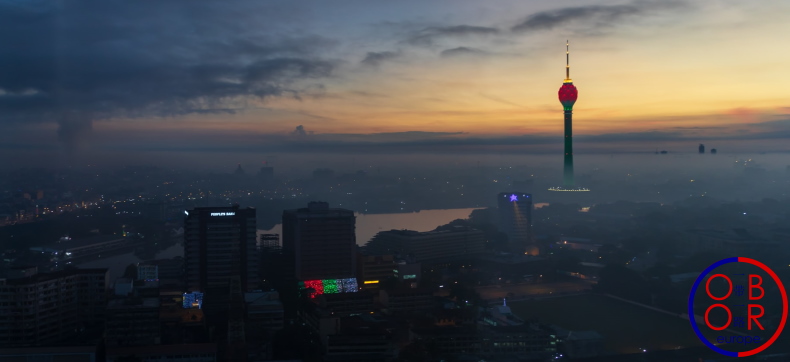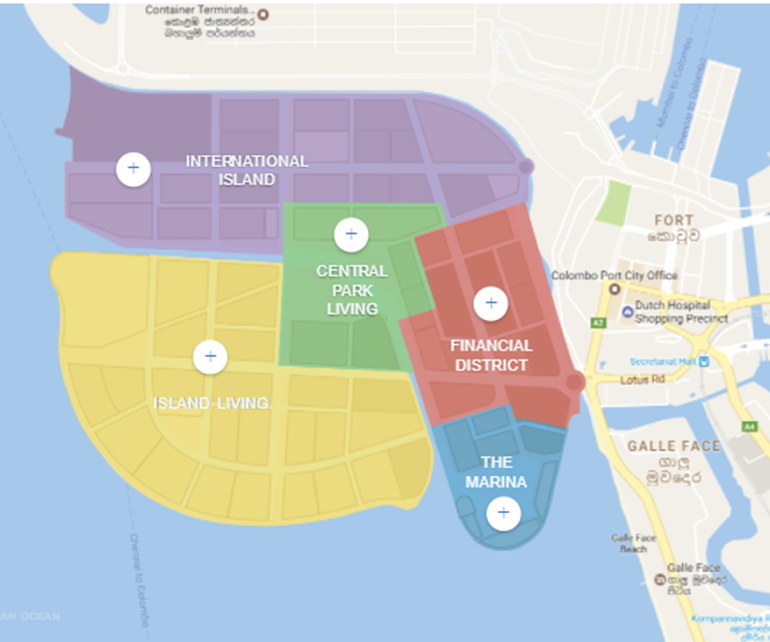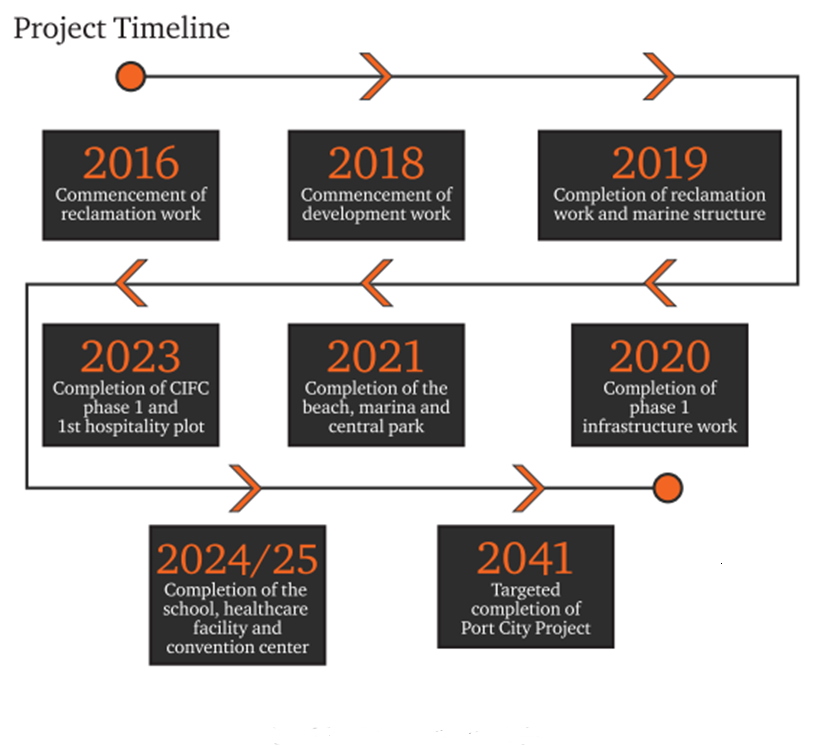by Ms. Natasha Fernando

Colombo Port City is a large scale development project under China’s Belt and Road Initiative. The port city Colombo is envisioned to be South Asia’s premier residential and business destination. The port city will be built on 269 hectares of reclaimed land from sea which will be an extension of Colombo, Sri Lanka’s commercial capital. This project is spear-headed by CHEC Port City Colombo Pvt Ltd which is part of the China Harbor Engineering Company, a subsidiary of the China Communications Construction Company. The project is therefore a joint venture with the government of Sri Lanka, falling under the purview of the Ministry of Urban Development, Water Supply and Housing Facilities and the Urban Development Authority. Recently the government of Sri Lanka passed the Colombo Port City Economic Commission Act on the 27th of May 2021. Now the government must strategize plans to realize its’ fullest potentials while also addressing the numerous challenges and roadblocks in the way.
The Port City Act

The Act provides for the establishment of a special economic zone, an economic commission and a master plan of the Colombo Port City. Colombo based law firm D.L. & F. De Saram, summarizes the contents of port city bill (before it came into law) which includes:
- The commission – empowered to facilitate investments and attract Foreign Direct Investments as a Single Window Investment Facilitator.
- Licenses and registrations to be issued to persons who will conduct businesses and corporations.
- Law stipulating the classification of land situated in the port city.
- The establishment of a stock exchange, ‘Estate Manager’ which is a company established to perform management tasks as assigned by the commission, and an International Commercial Dispute Resolution Centre.
- A number of tax exemptions allowed to encourage business and their employees as listed in schedule II of the Act.
Opportunities
Construction of the port city was officially launched on the 17th of September 2014 under the auspices of President Mahinda Rajapaksa. This mega scale development project is set to posit Colombo as an international financial district allowing it to compete with others of its nature such as: Dubai, Hong Kong and Singapore. The city is planned to host 5 precincts:
- Financial district
- Central Park living
- Island living
- The Marina
- International Island

Construction of the complete project is estimated to be realized in 2041. Phase 1 of the project is set to be completed before 2023 which includes infrastructure work, land reclamation, completion of the artificial island, marina and central park. In the years 2023-2025, the education and healthcare facilities will be completed.
Upon completion, the financial district could accommodate 11,000 residents, Marina district 5000, Central Park living district 10,000, Island living district 26,000 and another 26,000 in the International Island district. It is estimated that the port city will attract US $ 15 billion FDI into the country, and upon completion in 2021 to contribute US $ 11.8 billion to Sri Lanka’s economy.
The Port City Project is designed to meet modern town and country planning needs and requirements including environmental sustainability, such as an integrated approach to manage energy, water and waste needs of the commercial and residential population.
There is much promise and profit offered to the public in terms of quality lifestyle, entertainment and world class healthcare and education facilities. While such promises are bound to attract a sophisticated community of people to live and work in Sri Lanka, there are myriad challenges to its realization.
Challenges
Prior to the above mentioned developments, there was much opposition to the port city since 2014 from pressure groups questioning the legality of the project, raising environmental concerns and doubts on the anticipated benefits of the project to Sri Lanka: especially to the locals and their livelihood.
Due to these pressures, several reforms were initiated such as introduction of the ‘Zipper Green System’ to ensure environmental safeguards. Furthermore, 19 petitions were filed in the Supreme Court on the constitutionality of the Port City Bill amidst pressures by political parties such as Samagi Jana Bala Wegaya (the opposition party of Sri Lanka), Janatha Vimukthi Peramuna and individuals such as Venerable Muruththetuwe Ananda Thero of Abayarama temple in Colombo. The Port City was referred to as a ‘Chinese Colony’ by both some Sri Lankans and observers from India- where fears have sparked of Sri Lanka’s deepening cooperation with China.
The bill was however allowed to pass without a referendum and a 2/3rds majority votes of the parliament by the Supreme Court verdict delivered on 18th May 2021. The court amended the clauses 3(6), 30 (3), 55 (2) and 58 (1) which were inconsistent with the constitution as summarized below:
- The reclaimed land was deemed as territory of Sri Lanka and therefore parliament retain rights to legislate over the area.
- The powers of the commission which acts as a regulatory body were curtailed and defined so that the commission’s powers within the Area of Authority of the Colombo Port City is in agreement with the regulatory bodies including – Registrar General of Companies, Controller of Immigration and Emigration, Monitory Board of the Central Bank, Director General of the Central Environmental Authority and Director General of the Customs.
- Freedom of movement for Sri Lankan citizens will not be curtailed and they have access to all facilities and services within the Area of Authority of the Port City.
- Both local and foreign employees are NOT exempt from income tax.
- Authorized persons who wish to engage in business outside the Area of Authority will NOT be enjoying Incentives and Exemptions applicable under the Act to protect smaller business (who do not enjoy exemptions and incentives).
Challenges still remain as more protests could occur in the future rising from locals against foreign employment in Sri Lanka, foreigners usurping jobs of the locals, and anti-immigration sentiment. Some of the backlash could also stem from neighboring India keen to inhibit deeper Chinese involvement in Sri Lanka’s affairs inimical to India’s own interests.
As Member of Parliament Eran Wikremaratna points out, Sri Lanka must be ready for these challenges by offering more safeguards for Sri Lankans, and also providing investment opportunities to India, Middle East, US and Europe who are Sri Lanka’s largest trading partners.
Way Forward
The government must prepare to address these numerous challenges by re-strategizing and setting realistic objectives. Key to this is building trust among the locals and developing a positive image about the opportunities to locals from the project. Prime Minister Mahinda Rajapaksa had made statements that 75% of the nearly 200,000 jobs that will be created by the project will be reserved for Sri Lankans.
Furthermore, the government must build trust with Sri Lanka’s main import and export partners encouraging them to invest. Finally, the government must gain support from opposing political parties. For example: The 2015-2019 government were proactive with port city developments as projects under the Belt and Road Initiative were heavily promoted at the Indian Ocean Conference 2018 held in Sri Lanka. Therefore, it is still possible to build trust in order to take the project forward in a transparent and inclusive manner.
Share the post "Sri Lanka government must strategize plans for Colombo Port City"
